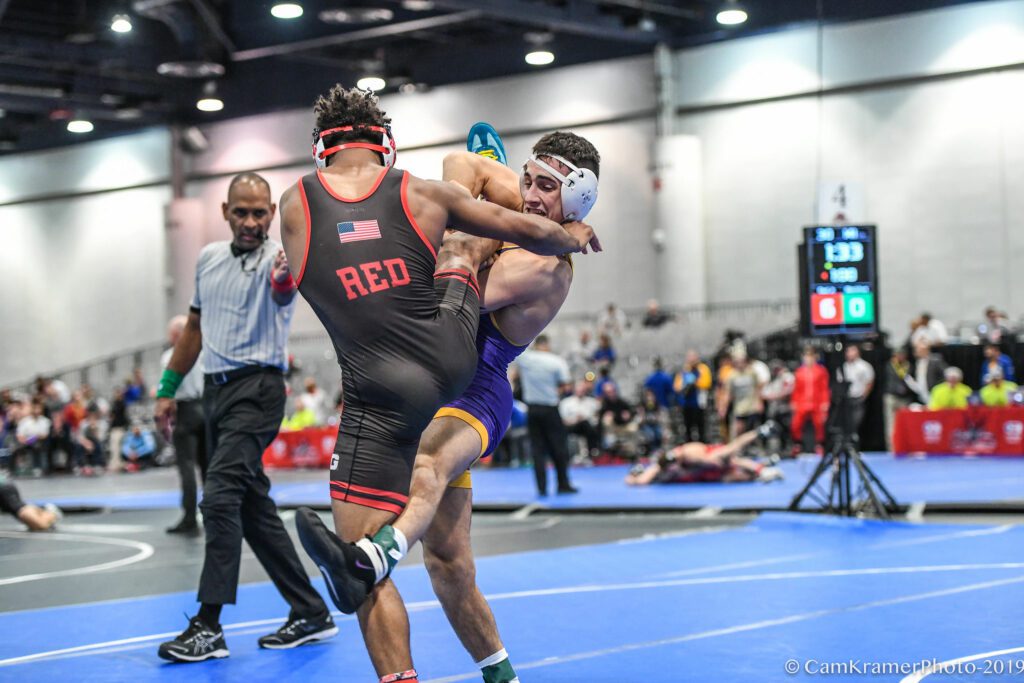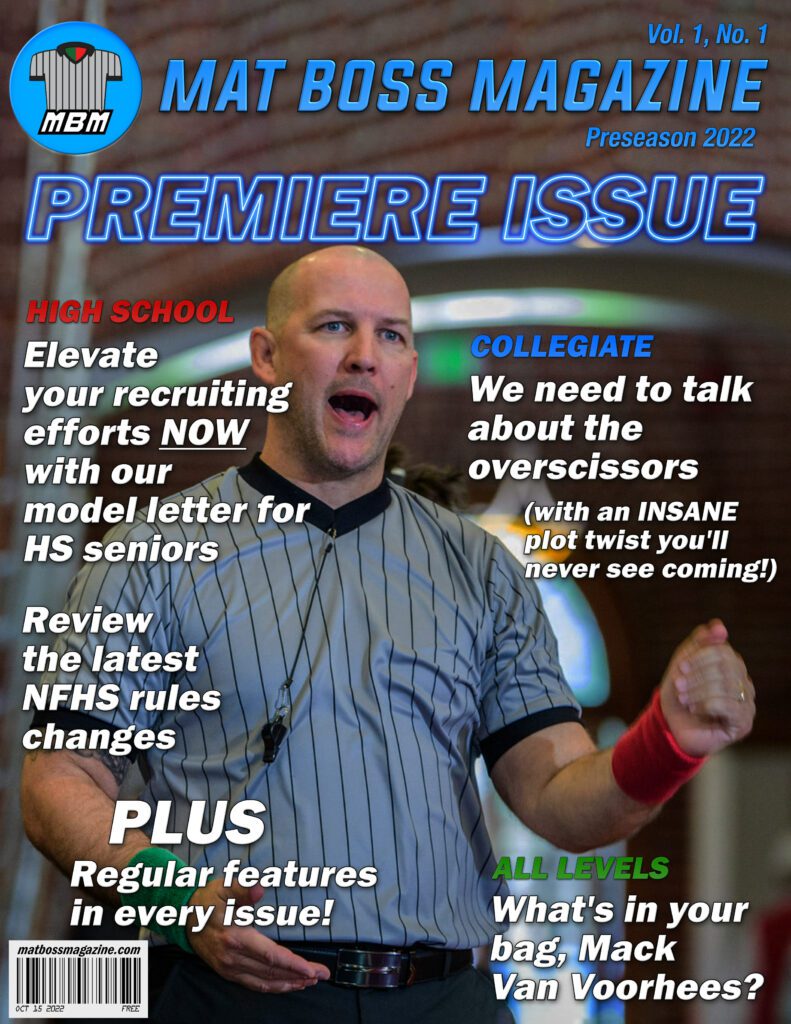The Context
So, this all came about because of one of last year’s preseason quizzes from the National Wrestling Officials Association (NWOA), authored by Ryan Hagan. I like to call Ryan “the Quizmaster,” because he is very good at developing these especially challenging and tricky quizzes that require you to really flex your rules knowledge.
One of the questions in this particular quiz was as follows:
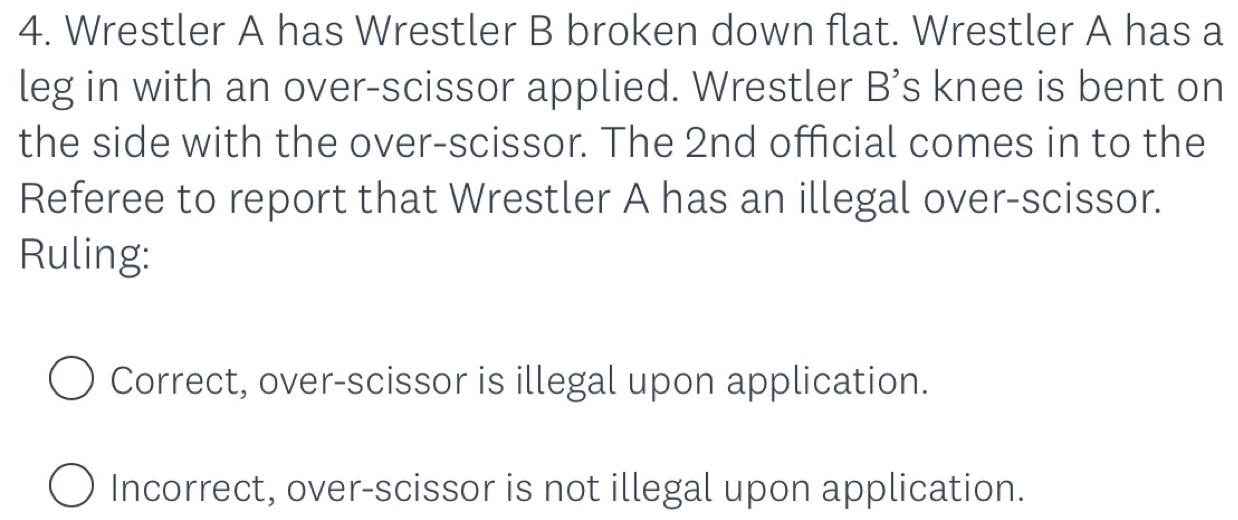
Obviously, this question is asking whether the overscissor is illegal by application or not.1The language about Wrestler B’s knee being bent is just there to tell us that it is not being hyperextended. After reviewing (and triple-checking) the illegal holds section in the Rules Book, I answered that the overscissor is illegal by application.
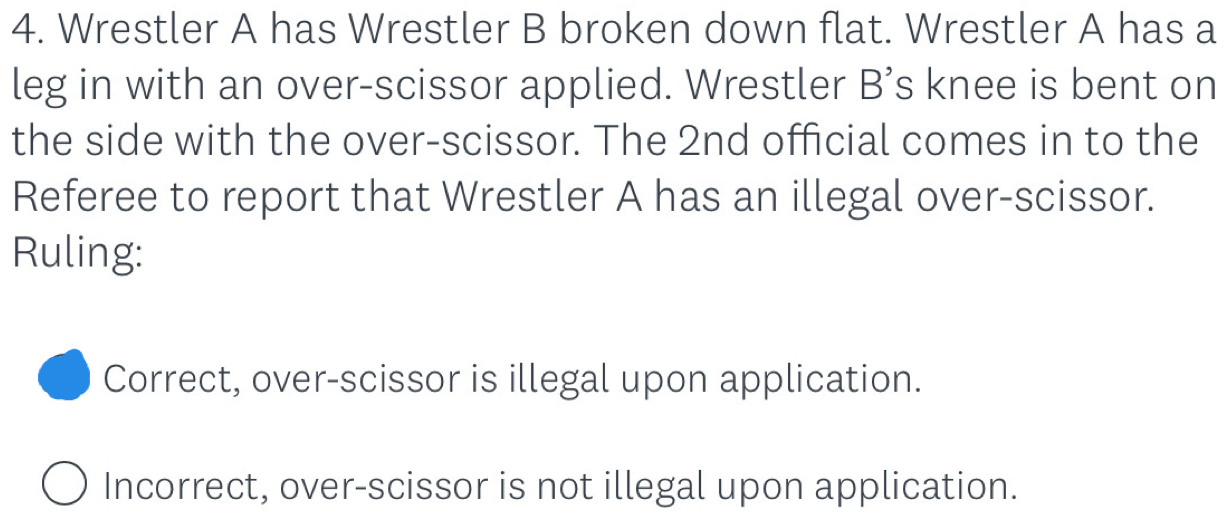
However, the credited response was that the overscissor is not illegal by application.

As the initial shock wore off, it turned to disbelief, then to skepticism. “Wait a second,” I thought. “That’s not what the Rules Book just told me.”
Had the Quizmaster — dare I say it — made a mistake? Was there an error in the Rules Book? Was I having a stroke or something? (Like I said, I had triple-checked the rules first, so I was absolutely certain about my choice.)
Had the Quizmaster -- dare I say it -- made a mistake? Was there an error in the Rules Book? Was I having a stroke or something?
Find out the answer (and so much more!) after this quick preview of what's in store for you at Mat Boss Magazine in the issues to come:
Welcome back.
It wasn’t a stroke.
I had, accidentally, stumbled onto an error in the Rules Book — hanging out for years, in plain sight.
(Actually, I stumbled onto two things, but we’ll get to that other one soon.)
Let’s go to the Rules Book.
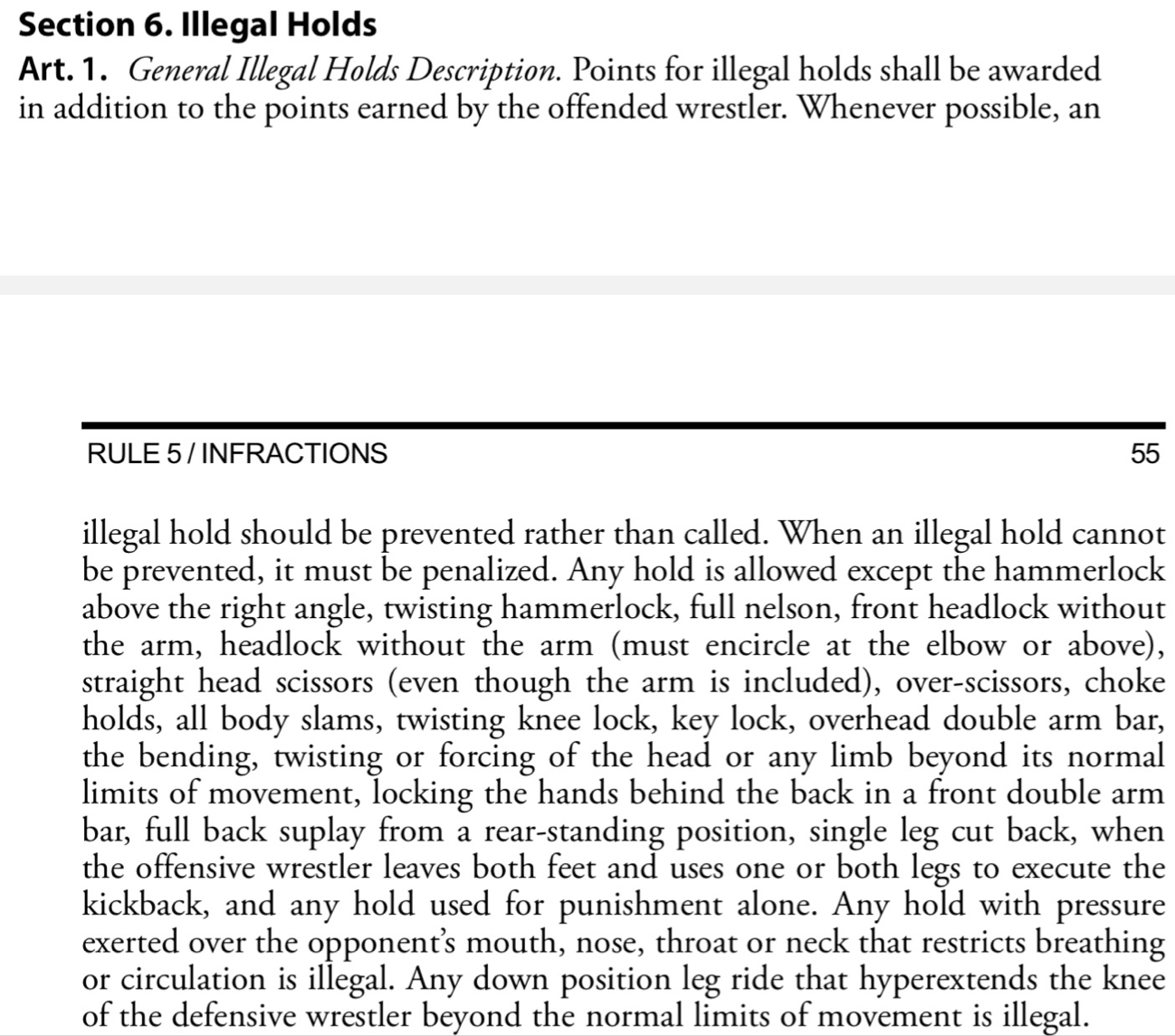
This is Rule 5, Section 6, Article 1, the general illegal holds article. It says, “Any hold is allowed except…” which is followed by a laundry list of holds that are not allowed.2To enhance readability, it might be prudent, in the next edition of the Rules Book, to enumerate these holds in list form rather than as a single-sentence wall of text. Those are all illegal by application. And when something has both legal and illegal applications, such as various types of headlocks, this rule says specifically what those limitations are.

So, for example, it says “the hammerlock above the right angle,” which is telling us that not all hammerlocks are illegal by application, but those above the right angle are.

Similarly, it says “front headlock without the arm,” telling us that front headlocks are permitted with the arm, but without the arm, they are not.
And we see that again in this additional part about headlocks:

Again, the rule is explicitly setting conditions on when it is legal and when it is not.
You see where this is going, right? (Looking at the last image, you might have already noticed the problem.)

There it is. Overscissors. Straight up. No limitations or qualifications on it, just a blanket prohibition.
That is what caused me to believe that the overscissors is illegal by application — and anyone who reads Rule 5.6.1 would have no choice but to think the same.
This is, of course, a huge problem, but there happens to be an easy fix.
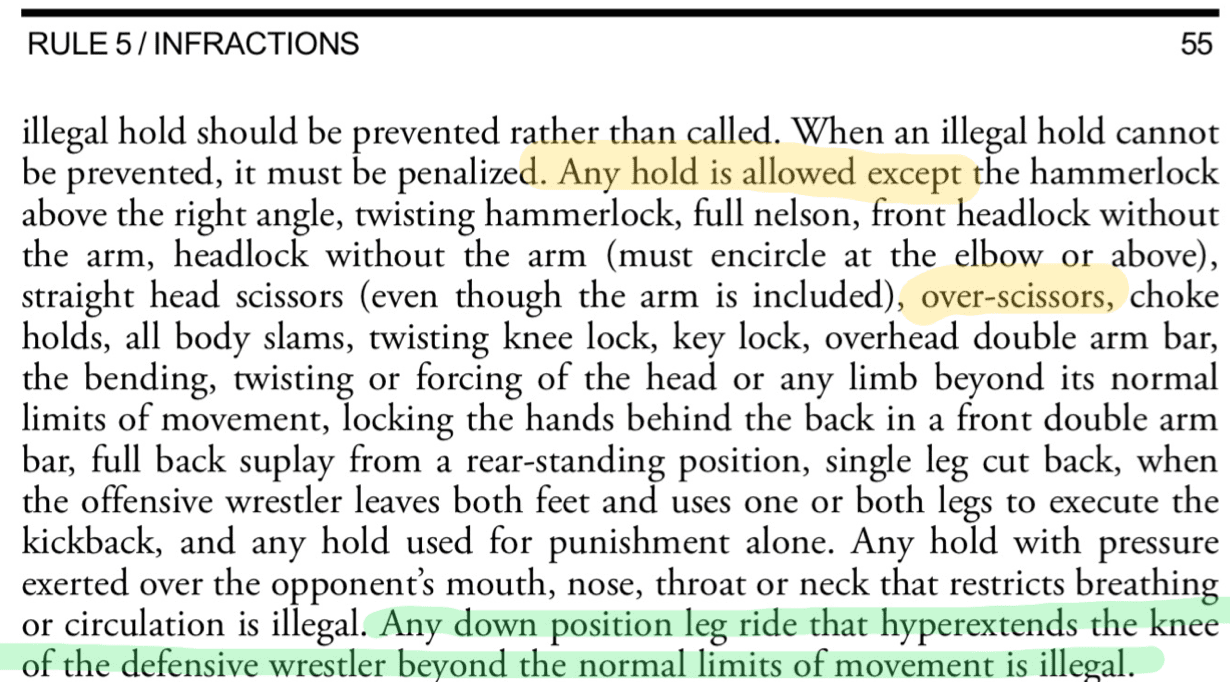
That last sentence of Article 1 — the green highlighted portion — says that “[a]ny down position leg ride that hyperextends the knee of the defensive wrestler beyond the normal limits of movement is illegal.” That includes, but is not necessarily limited to, the illegal kind of overscissor. Consequently, because that sentence already includes the illegal kind of overscissor, we don’t actually need the word “overscissors” in Article 1 at all. We can simply delete it.3Just to reiterate, that last sentence, highlighted in green, fully covers all illegal overscissors already, and it does so without sweeping too broadly and making all overscissors illegal by application. By actually putting the word “overscissors” into Article 1, however, the rule goes too far and makes all overscissors illegal by application (even those which we would already know to be legal). That cannot possibly be correct.
Now, what you might be saying is, “Well, what about those two photos — No. 72 and No. 73 — that purport to be ‘examples of legal (top photo) and illegal (bottom photo) overscissors locks’?”
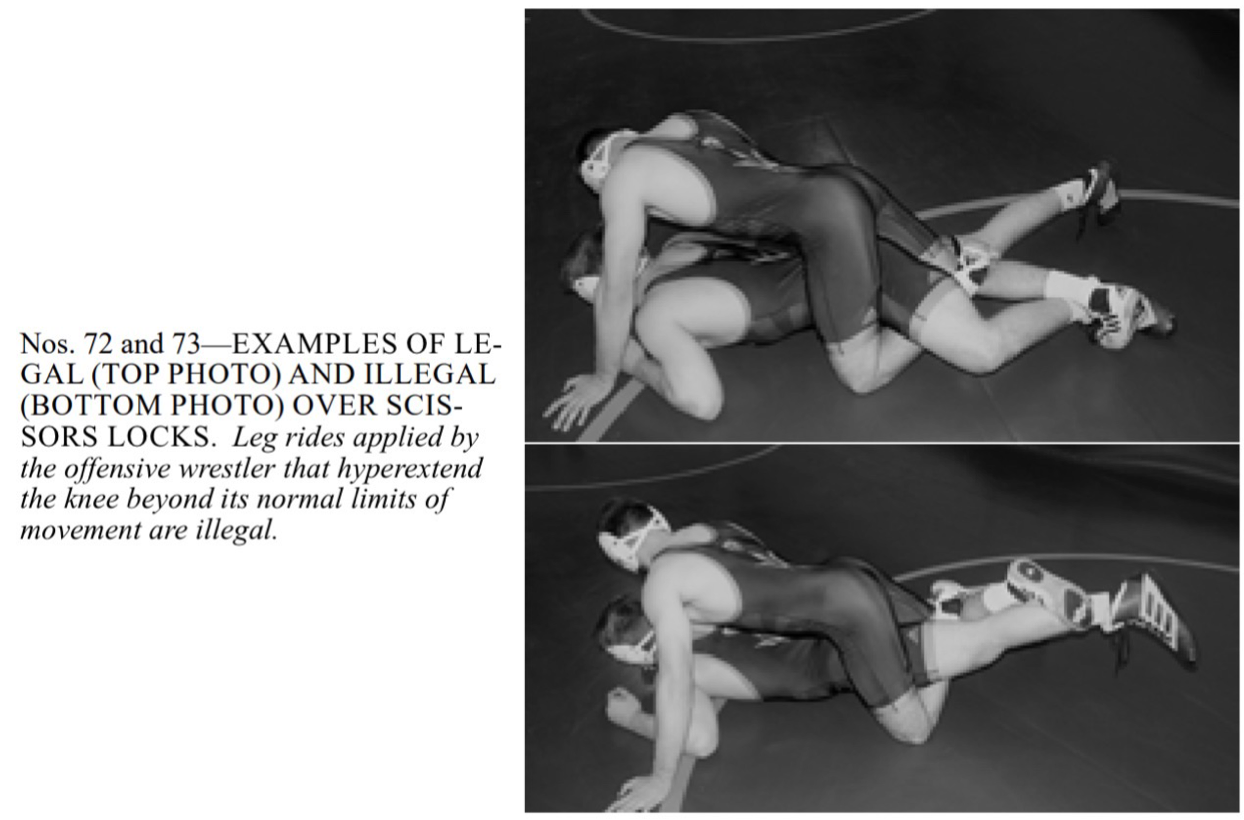
Well, the fact that there are illustrations showing examples of legal overscissors locks doesn’t override the explicit, plain text of Rule 5.6.1 — which, as I explained, as currently written, prohibits all overscissors by application, with no limitations on that. When the text of a rule and the text of an illustration are in direct conflict, the text of the rule has to be controlling. But regardless, one of them must be wrong, as you now have a completely incompatible situation there, and so one of them ultimately has to be fixed.
Fortunately, once the text of the rules are fixed, these two images and their accompanying caption can still be utilized verbatim; nothing has to be changed about that, because it will now be in accord with the fixed text of Rule 5.6.1.
But I did say “once the text of the RULES are fixed,” because it’s not actually just Rule 5.6.1 that is problematic. Let me explain.
Here's where things get seriously weird.
I call this “The Article 4 Mystery.”
I’m referring to Rule 5.6.4 — in other words, Article 4 of Rule 5.6. Here it is.

First, look at the words “Over-Scissors” and “See Illustrations.” I want you to just block each of those out of your mind for a second. Like this:

Now, what I want you to do is to look at the first clause of that sentence, highlighted for you in the next image. And I want you to read it.

Read it again. Really process it.
> a leg hooked over the top toe of an opponent’s straight body scissors
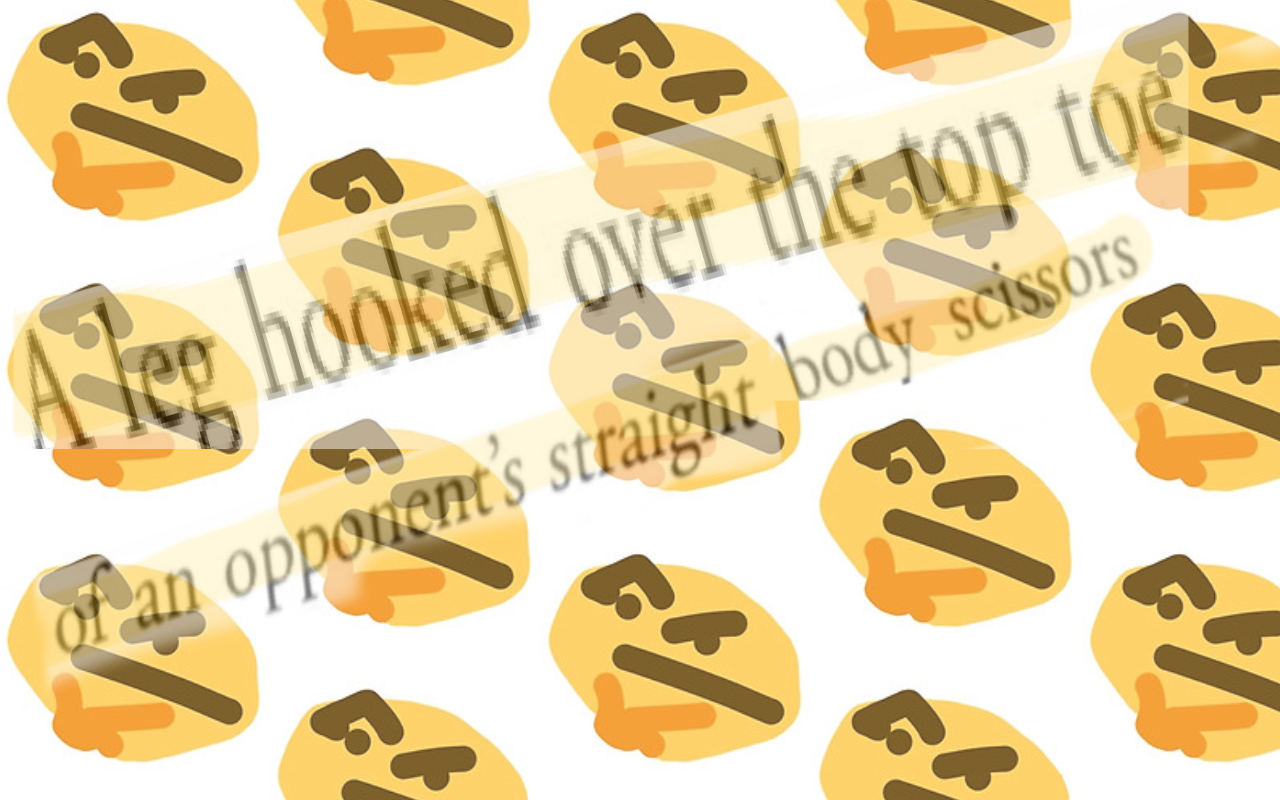

WHAT. EVEN. IS THAT?
Don’t answer, it’s a rhetorical question. The reality is that nobody knows what that is. I have asked many very high-level officials, who have themselves asked other very high-level officials. Nobody, all the way to the top, has any idea what it is.
And perhaps the reason nobody knows what it is is because what the highlighted part of that sentence says is literally physically impossible to do.
It cannot be done.
The phrase is nonsense. It’s gibberish.
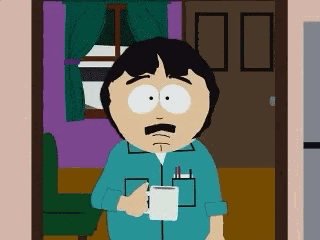
Moreover (as if the sentence wasn’t already off to the worst possible start), the second part of this sentence, highlighted below, actually reiterates, or reinforces, the same problem I was discussing previously, because it necessarily implies that all overscissors are illegal.

What is being communicated here is:
“[That mysterious thing, whatever it is] is interpreted as an overscissor and is therefore illegal [because all overscissors are illegal].”

And so, what we actually end up having here with Article 4 is the first part of that sentence being gibberish, and the second part of it being incorrect. (As we know that not all overscissors are illegal, to imply it there is wrong.)
As a result, since none of Article 4 is usable, the entire article should simply be deleted.
The Necessary Changes
In conclusion, the necessary changes here are simple:
1. Delete the text “over-scissors” from Article 1 of Rule 5.6.
2. Delete Article 4 of Rule 5.6 in its entirety. (The remainder of the articles in Rule 5.6 will have to be renumbered as a result.)
That fixes everything, and we can also finally consider the case of The Article 4 Mystery closed.
Update: Secretary-Rules Editor Agrees with Our Analysis, Plans to Have Fixes Completed for Next Rules Cycle (2023-24)
Secretary-Rules Editor (SRE) Chuck Barbee was the person to whom this primarily needed to be addressed, so we sent the above analysis to him. He reviewed it and responded as follows:
Dear Mack,
Thank you for your assessment. I must admit, you had me cracking up talking about the article 4 mystery; but you are right… That gibberish sentence is a mystery isn’t it, lol. When I first started as the SRE, there were so many sentences in the book where I would read it and say “what does that even mean?” I think I’ve gotten rid of most all of those head scratchers but every now and then we uncover another gem :).
Rule book corrections and edits don’t happen fast but I will make note of this and in the next version of the rules book I’ll see if we can bring clarity to the over-scissor situation.
It sounds like you have a firm grasp on the rule but we can confirm that an over-scissor that hyperextends the knee is illegal upon application.
Thanks again,
Chuck
Chuck Barbee
NCAA Wrestling
Secretary-Rules Editor & Weight Management Liaison
So, there you have it, folks; an excellent response by the SRE. Look for the changes in the next edition of the Rules Book, which will be issued in the 2023-24 season.42022-23 is not a rules change year; those occur every other season. In the meantime, the SRE has clarified Rule 5.6.1 for us by stating that the text is to be interpreted as making an overscissors illegal only if it hyperextends the knee.
In the Next Issue
“Rules Snafu Postmortem”
While the Article 4 Mystery has finally been solved, there is now a mystery behind the mystery — and where it leads us is as fascinating as it is humbling.


